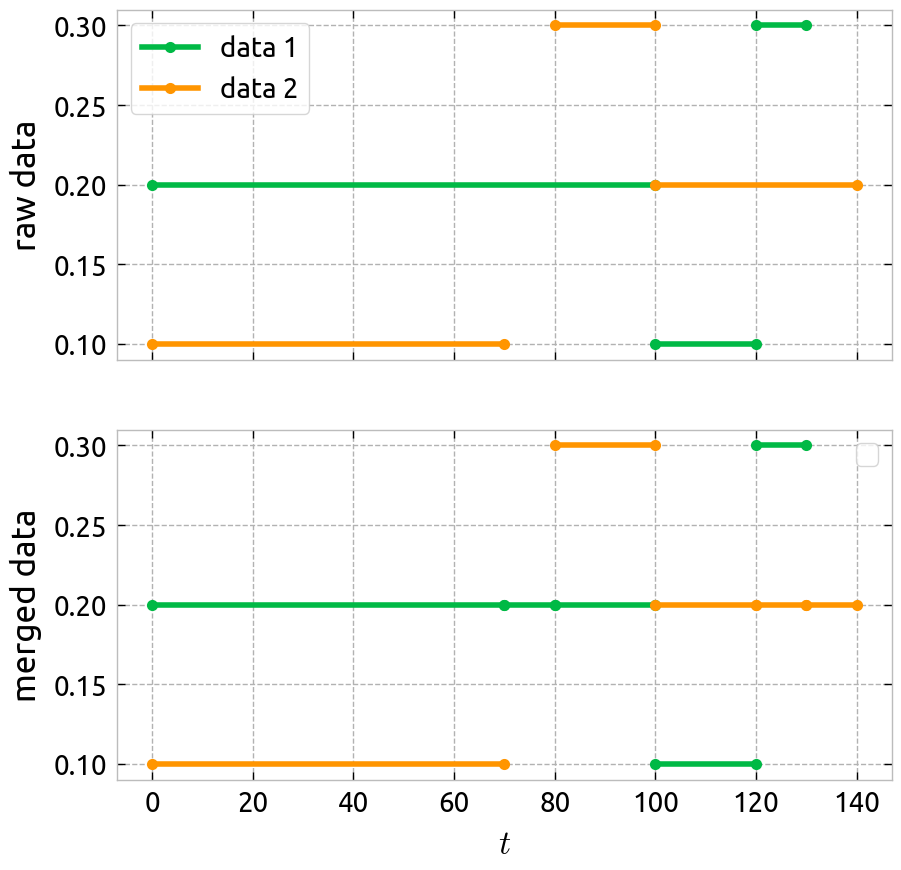pip install crepThis simple module aims at providing some function to tackle tabular data that have a continuous axis. In situations, this index can represent time, but this tool was originally developed to tackle rail way description.
This simple tools helps providing tools to represent a linear structure (cable, rail, beam, pipe) whose characteristics are piece-wize constant (of strongly heterogeneous length)
- Merge function merge together two dataframe
import pandas as pd
from crep import merge
df_left = pd.DataFrame(
dict(id=[2, 2, 2],
t1=[0, 100, 120],
t2=[100, 120, 130],
data1=[0.2, 0.1, 0.5])
)
df_right = pd.DataFrame(
dict(id=[2, 2, 2],
t1=[0, 80, 100],
t2=[70, 100, 140],
data2=[0.1, 0.3, 0.2])
)
ret = merge(data_left=df_left,
data_right=df_right,
id_continuous=["t1", "t2"],
id_discrete=["id"],
how="outer")Yield the following result
Test if your data is admissible to the merge function, you can use the tools module
import pandas as pd
from crep import tools
df_admissible = pd.DataFrame(
dict(id=[2, 2, 2],
t1=[0, 100, 120],
t2=[100, 120, 130],
data1=[0.2, 0.1, 0.5])
)
df_not_admissible = pd.DataFrame(
dict(id=[2, 2, 2],
t1=[0, 90, 120],
t2=[100, 120, 130],
data1=[0.2, 0.1, 0.5])
)
# the second table is not admissible because for t in [90,100] two values are possible
assert tools.admissible_dataframe(
df_admissible, id_continuous=["t1", "t2"],
id_discrete=["id"])
assert not tools.admissible_dataframe(
df_not_admissible, id_continuous=["t1", "t2"],
id_discrete=["id"])
print(tools.sample_non_admissible_data(
df_not_admissible, id_continuous=["t1", "t2"],
id_discrete=["id"]
))
# id t1 t2 data1
# 1 2 90 120 0.1This implementation come from an SNCF DTIPG project and is developed and maintained by Mews Labs and SNCF DTIPG.


